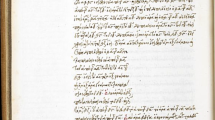Abstract
Michelangelo thought that stone statues pre-exist their sculptors’ performance. Michelangelo’s view gives rise to a puzzle, which we call Michelangelo’s puzzle. Michelangelo’s puzzle looks structurally similar to so-called problems of material constitution (e.g., the puzzle of the statue and the clay, or the puzzle of Tibbles the cat); so it is tempting to suppose that it can be similarly accounted for. This paper argues that the supposition is misguided. Michelangelo’s puzzle raises specific problems, which cannot be adequately dealt with unless one is prepared to give up either the natural view that stone sculptures are human creations, or a very plausible principle concerning the persistence of middle-sized material objects. A tentative solution to the puzzle is provided, in which borders can play an ontological role in the making of material objects. This solution is intuitively more palatable than Michelangelo’s view, but is nonetheless at odds with a commonsensical, realist attitude towards material objects. Thus, Michelangelo’s puzzle poses a serious challenge to common sense, which is unparalleled by other problems of material constitution.





Similar content being viewed by others
Notes
The case of Michelangelo’s David and its counterpart(s) within the marble block is mentioned in Van Inwagen 1981.
Sometimes further requirements are put on coincidence, i.e., that coincident objects have the same proper parts, or that they share the same underlying matter (see, e.g., Wasserman 2017). We stick with the simple characterisation of coincidence given in the text, for these additional requirements have no bearings on the derivation of the puzzle and its analysis.
We are making no special assumption on the notion of an intrinsic property; any account in the literature will do (see Weatherson and Marshall 2014 for an overview). The notion of a component can be identified with the mereological notion of a proper part or, in a more cautious way, with a suitable contextual restriction of that notion. The main reasons to be cautious in identifying components and mereological proper parts have to do with vagueness, and with some intuitive requirements that are ordinarily put on the former (e.g., disjointness) but not on the latter.
We ignore complications that may emerge if the possibility of time travels is taken into the account.
Below, we briefly discuss the option of rejecting (4). If premise (1) is taken to entail that Ur-David is a material object at t, then some philosophers would reject it for conceptual or metaphysical reasons, most notably van Inwagen (1981). We ignore this (unusual) attitude due to space limitations. However, we shall consider the hypothesis that Ur-David is not an ordinary material object.
When we speak of the ‘emergence’ of boundaries, we intend to remain neutral as to whether boundaries are literally created through the sculpting process or they pre-exist the process and only come to light at the end of it. When framed in accordance with the former understanding of emergence, the view that David’s creation requires the emergence of certain boundaries is consistent with Varzi’s (2016: 50) insistence that “the possession of a boundary is a sign of objecthood”. See also Smith and Varzi 2000.
We assume that the notion of internal change, or some suitable refinement of it, can be applied also to objects like A, even if we have no intuitive o pre-theoretical idea of what the components of a white triangle are.
References
Burke, M. (1992). Copper statues and pieces of copper: A challenge to the standard account. Analysis, 52(1), 12–17.
Chisholm, R. (1976). Person and object. Open Court, La Salle: A Metaphysical Study.
Dickie, G. (1983). The new institutional theory of art. Proceedings of the 8th International Wittgenstein Symposium, Vol. 10, pp. 57–64.
Fine, K. (2003). The non-identity of a material thing and its matter. Mind, 112(446), 195–234.
Kanizsa, G. (1955). Margini quasi-percettivi in campi con stimolazione omogenea. Rivista di Psicologia, 49, 7–30. Trans. As quasi-perceptual margins in homogeneously stimulated fields, in S. Petry and G. E. Mayer (1987) (Eds.), The Perception of Illusory Contours (pp. 40–49). New York: Praeger.
Smith, B. (2001). Fiat objects. Topoi, 20(2), 131–148.
Smith, B., & Varzi, A. (2000). Fiat and bona fide boundaries. Philosophy and Phenomenological Research, 60(2), 401–420.
van Inwagen, P. (1981). The doctrine of arbitrary undetached parts. Pacific Philosophical Quarterly, 62(2), 123–137. Reprinted in his (2000) Ontology, Identity, and Modality (pp. 75–94). Cambridge: Cambridge University Press.
Varzi, A. (2008). The extensionality of parthood and composition. The Philosophical Quarterly, 58(230), 108–133.
Varzi, A. (2016). On drawing lines across the board. In L. Zaibert (Ed.), The theory and practice of ontology (pp. 45–78). London: Palgrave Macmillan.
Wasserman, R. (2017). Material constitution. In Zalta, E. N. (Ed.), The Stanford Encyclopedia of Philosophy (fall 2017 Ed.). https://plato.stanford.edu/archives/fall2017/entries/material-constitution.
Weatherson, B., & Marshall, D. (2014). Intrinsic vs. extrinsic properties. In Zalta, E. N., ed., The Stanford Encyclopedia of Philosophy (fall 2014 Ed.). http://plato.stanford.edu/archives/fall2014/entries/intrinsic-extrinsic.
Acknowledgements
We thank Francesco Orilia and an anonymous reviewer of Philosophia for their useful remarks on previous versions of this paper.
Author information
Authors and Affiliations
Corresponding author
Rights and permissions
About this article
Cite this article
Spolaore, G., Giaretta, P. Michelangelo’s Puzzle. Philosophia 46, 453–464 (2018). https://doi.org/10.1007/s11406-017-9940-y
Received:
Accepted:
Published:
Issue Date:
DOI: https://doi.org/10.1007/s11406-017-9940-y




